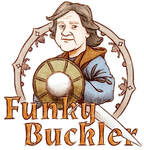|
Today we will begin a series to compare two sword and buckler systems; I.33 and the plays of Andre Lignitzer. Through this series, we will explore the two systems’ overlapping principles as well as their disagreements. I.33 starts each of its 40 plays with a cross in the top left of the image. To compare Lignitzer’s system with I.33, a cross that is most similar to Lignitzer’s play will be selected. If the sixth play in I.33 is referenced, then it will be identified as cross 6. To start the series, we will begin by exploring Andre Lignitzer’s first play and comparing it to a section from cross 1 of I.33. Comparing Lignitzer Play 1 to I.33 Cross 1
The Similarities Both systems bring the sword and buckler together when the sword is engaged and in front of the fencer. In the case of I.33, this is supported by the images that show the sword and buckler together. In the case of Lignitzer, this is supported by the advice shown in the first play that recommends to bring the sword and buckler together when delivering an Oberhaw. Another similarity is that in both systems, a thrust is delivered from the bind while using the sword (and presumably the buckler) to cover the lines of attack from the opponent. I.33 appears to be a bit more conservative in this approach; recommending to perform the thrust-strike when the opponent tries to attack the head. I.33 also goes a step further to state that only common fencers think they can attack the head when they are bound from half-shield. Lignitzer, on the other hand, does not qualify when this thrust should be performed. It appears that according to Lignitzer, this thrust from the bind can be performed whenever an Oberhaw is delivered. It is also possible that this thrust from the bind can be performed whenever the fencer can safely bind against the opponent’s blade with an over-bind (snap-over). The Differences While I.33 would prefer to position the sword into an antagonizing position, Lignitzer’s system would prefer to attack into a bind. Lignitzer’s action in the play is similar to the advice given in longsword in the Liechtenauer tradition. In contrast, I.33 prefers to place the sword and buckler into a position to provoke the opponent into responding. However, if both fencers attack from the wards, then binding may occur. This would result in the same binding sequences I.33 instructs. Further evidence of this can be found in cross 25 of I.33 where the sword and buckler in a cut are illustrated similarly to half-shield. Closing Thoughts The main difference between play 1 of Lignitzer and this section in cross 1 of I.33 is the way the engagement begins. However, once the bind occurs, either systems’ fencers could be in a position where a thrust may be delivered.
It is clear that both systems are concerned with clean engagements that emphasize attacking the opponent while not putting the attacker at risk. Both systems recommend occupying the opponent’s sword while delivering a thrust from the bind to achieve a safe exchange. This emphasis on safe exchanges will be further explored when we dive in to the second play of Lignitzer where the two systems will seemingly disagree quite heavily on the “best technique” for the situation. Next post in the series: Comparing I.33 and Lignitzer: Play II
0 Comments
|
Proudly powered by Weebly


